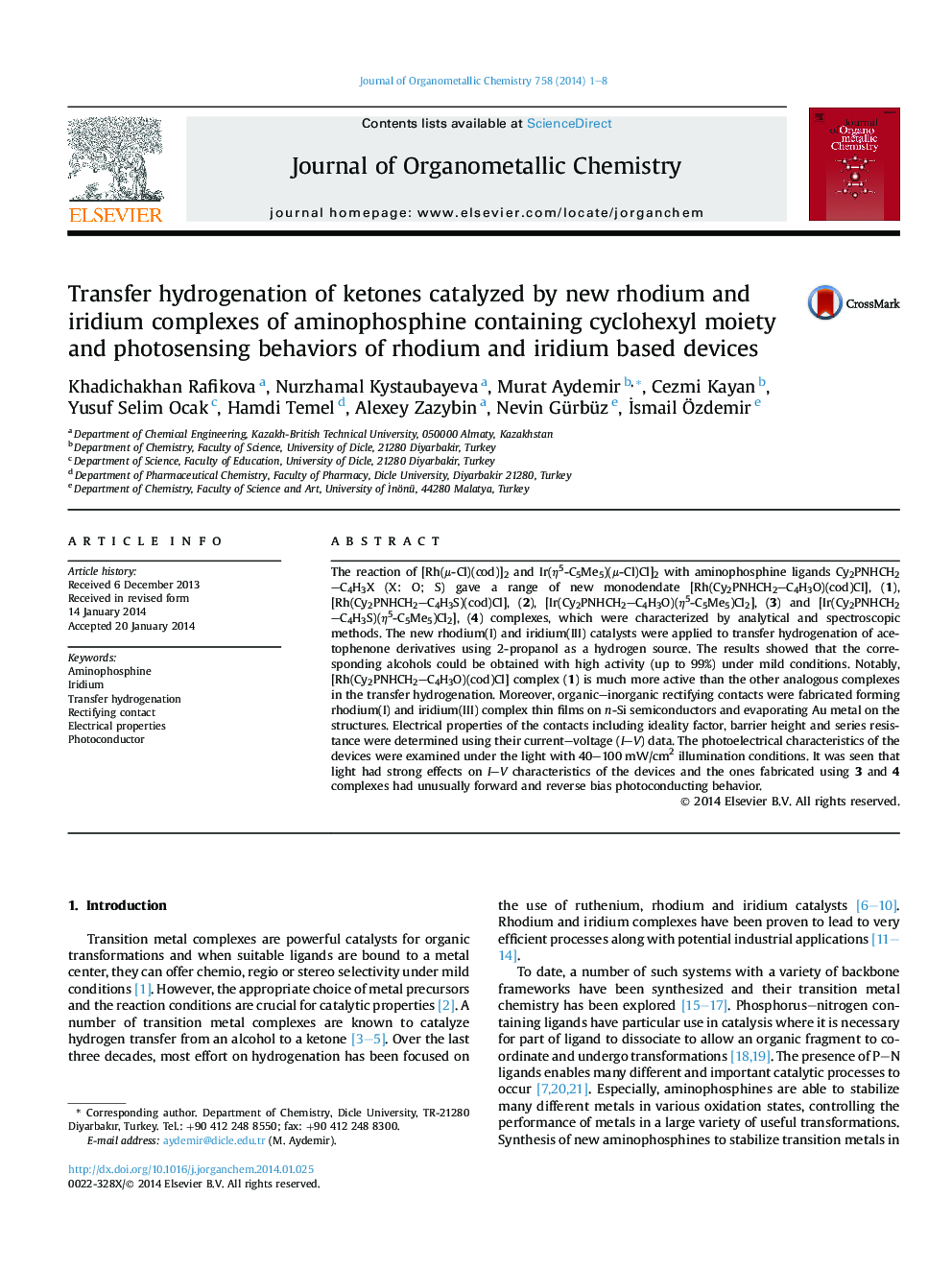| کد مقاله | کد نشریه | سال انتشار | مقاله انگلیسی | نسخه تمام متن |
|---|---|---|---|---|
| 1321144 | 1499882 | 2014 | 8 صفحه PDF | دانلود رایگان |
• For the first time complexes of aminophosphine carrying cyclohexyl moiety were synthesized and characterized.
• [Rh(Cy2PNHCH2–C4H3O)(cod)Cl] was a more efficient catalyst in the transfer hydrogenation.
• Fabrication heterojunction devices and their electrical properties were presented.
• Reverse and forward bias photosensing behaviors for Ir(III) complexes were reported.
The reaction of [Rh(μ-Cl)(cod)]2 and Ir(η5-C5Me5)(μ-Cl)Cl]2 with aminophosphine ligands Cy2PNHCH2–C4H3X (X: O; S) gave a range of new monodendate [Rh(Cy2PNHCH2–C4H3O)(cod)Cl], (1), [Rh(Cy2PNHCH2–C4H3S)(cod)Cl], (2), [Ir(Cy2PNHCH2–C4H3O)(η5-C5Me5)Cl2], (3) and [Ir(Cy2PNHCH2–C4H3S)(η5-C5Me5)Cl2], (4) complexes, which were characterized by analytical and spectroscopic methods. The new rhodium(I) and iridium(III) catalysts were applied to transfer hydrogenation of acetophenone derivatives using 2-propanol as a hydrogen source. The results showed that the corresponding alcohols could be obtained with high activity (up to 99%) under mild conditions. Notably, [Rh(Cy2PNHCH2–C4H3O)(cod)Cl] complex (1) is much more active than the other analogous complexes in the transfer hydrogenation. Moreover, organic–inorganic rectifying contacts were fabricated forming rhodium(I) and iridium(III) complex thin films on n-Si semiconductors and evaporating Au metal on the structures. Electrical properties of the contacts including ideality factor, barrier height and series resistance were determined using their current–voltage (I–V) data. The photoelectrical characteristics of the devices were examined under the light with 40–100 mW/cm2 illumination conditions. It was seen that light had strong effects on I–V characteristics of the devices and the ones fabricated using 3 and 4 complexes had unusually forward and reverse bias photoconducting behavior.
Novel Rh(I) and Ir(III) complexes containing aminophosphine ligands including cyclohexyl moiety have been synthesized and used as catalyst in the reduction of the ketonic CO bond by hydrogen transfer conditions. The electrical properties of the devices were analyzed in dark and under a solar simulator with various illumination conditions.Figure optionsDownload as PowerPoint slide
Journal: Journal of Organometallic Chemistry - Volume 758, 15 May 2014, Pages 1–8
